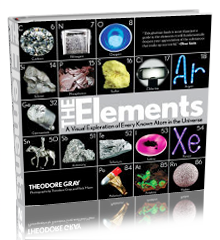Radioactive lens. | |||
| Sample Image | |||
| Radioactive lens. For a while thorium was added to lens glass to increase its index of refraction (which allows the lens to be thinner and lighter). It also increases its level of radioactivity, from zero to quite a bit: This rather small lens registers about 4000 counts per minute on my Geiger counter. A large compound camera lens could be quite radioactive, which is one reason they stopped using thorium this way. Another reason is that over a period of time, the glass turns yellow. Interestingly, this is not due to any sort of chemical reaction, it's caused by the radioactivity itself. Charged particles shot out when the thorium decays knock electrons out of place in the glass. Because glass is an insulator other electrons can't easily move in to fill the hole, and a so-called color center is formed, in which the missing electron allows light to be absorbed in a previously transparent substance. Heating the glass can allow enough electron mobility to wipe out the color, or so I read. Source: eBay seller heruur Contributor: Theodore Gray Acquired: 3 June, 2003 Price: $25 Size: 0.5" Purity: 1% | |||
|

